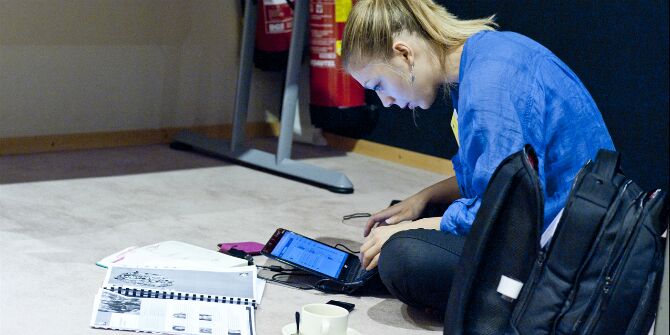 As we enter the slow news season when editors and producers struggle to fill column inches and airtime, the team at Inforrm look at the issue of journalistic sting operations. They argue that this practice needs to be taken up with more precision that currently exists in the PCC Editors’ code.
As we enter the slow news season when editors and producers struggle to fill column inches and airtime, the team at Inforrm look at the issue of journalistic sting operations. They argue that this practice needs to be taken up with more precision that currently exists in the PCC Editors’ code.
Over the past couple of months the tabloids, the broadsheets and the broadcasters have been entertaining us with “journalistic sting” stories. Politicians and celebrities have been caught out by fictitious lobbying companies and the “fake sheikh”.
There was Patrick Mercer, the MP for Newark, who resigned the Tory whip after a BBC Panorama investigation showed him accepting money from people he believed to be lobbyists acting on behalf of the government of Fiji.
Then there was Mazher Mahmood‘s story for Sun on Sunday involving the set up
of singer and X Factor Judge Tulisa Contostavlos as “a drug fixer who set up an £800 cocaine deal“. This was attacked at the time by Marina Hyde in the Guardian and Roy Greenslade had a blog piece entitled “Tulisa sting by The Sun lacks any journalistic merit“
The following week, Sunday 9 June 2013 there was a report by the Sunday Times Insight team alleging Tim Yeo MP had told undercover reporters he could use his contacts to further the interests of clients. The reporters were pretending to act on behalf of a fictitious South Korean solar energy company. Mr Yeo denied the allegation.
Last week it was reported that Tulisa’s manager had written to the chairman of the culture and media select committee to complain about a Sun on Sunday sting operation on his client. He said
“It is plain that the undercover journalists set out to entrap her. This was not an attempt to expose pre-existing criminality; rather there was an extensive, sustained and deliberate campaign to lure her into committing an offence.”
All three incidents had one thing in common: the “wrongdoing” in question would not have happened without the encouragment of undercover journalists. Is this an acceptable way of obtaining stories? As Roy Greenslade said in a recent post,“Journalism: to sting or not to sting?“
We had a post about this in 2010 in the context of another Mazher Mahmood sting (involving Pakistani cricketers). The terms of the debate have not really changed. Many journalists have serious doubts about the use of the “sting”. Writing in 2010 about various then current entrapment cases, the investigative journalist and former member of the Sunday Times’ Insight team Phillip Knightley said:
“Most of the reporters I worked with at The Sunday Times in the 1980s opposed the use of deception on principle. They took their lead from a statement by Benjamin C Bradlee, executive editor of the Washington Post: “In a day when we are spending thousands of man-hours uncovering deception, we simply cannot afford to deceive.” So why do newspapers do it? Going undercover is considered glamorous. Acting a role that exposes wrongdoing or greedy and bad behaviour attracts some journalists, particularly those seeking to become the heroes of their own stories. But above all, at a time of falling circulations and editorial financial restrictions it is a comparatively cheap form of journalism with a quick result.”
The issue is not properly dealt with by the PCC Code. Clause 10 provides that
ii) Engaging in misrepresentation or subterfuge, including by agents or intermediaries, can generally be justified only in the public interest and then only when the material cannot be obtained by other means.
However, the Code says nothing about participating in and perhaps instigating wrongdoing. This subject does not appear to have been explored in any of the PCC’s decisions.
Clause 10 was considered in the Vince Cable case in 2011. It was said that the Daily Telegraph:
“had embarked on a ‘fishing expedition’ “designed solely to entrap Members of Parliament” which had no plausible public interest justification“.
The complaint was upheld by the PCC. It noted that Clause 10 of the Code states that newspapers”must not seek to obtain or publish material acquired by using hidden cameras or clandestine listening devices“. It also makes clear that “engaging in misrepresentation or subterfuge…can generally be justified only in the public interest and then only when the material cannot be obtained by other means“. It was noted that the PCC had consistently ruled that so-called ‘fishing expeditions’ – where newspapers employ subterfuge and use clandestine devices without sufficient justification – are unacceptable.
The question was whether the Daily Telegraph had demonstrated that it had sufficientprima facie grounds for investigation before its reporters were asked to go undercover and was such an investigation (using hidden listening devices) justified in the public interest? The PCC concluded that the newspaper had reached the wrong decision in deciding to pursue subterfuge because
- The evidence on which the newspaper was acting (such as the Commission could see) was of a general nature. The newspaper did not appear to have any specific information (the significance of which could be established in advance) that the ministers in question had expressed private views at odds with Coalition policy.
- The level of subterfuge was high and the public interest was such as to justify proportionately this level of subterfuge.
A similar result was reached in the more recent decision of McLellan v Kent and Sussex Courier where a breach of clause 10 was found because “
At the time it had undertaken subterfuge, the newspaper had had no evidence that the complainant was engaging in illegal or improper activity”
The fact that the subterfuge did, in fact, uncover evidence of wrongdoing could not retrospectively justify the initial decision to engage in subterfuge.
These decisions do not dirtecly engage with the “entrapment” issue. In what circumstances is it acceptable for journalists to induce individuals to commit wrongdoing by offering financial othe inducements? On the one hand, “stings” often lead to important public interest stories. On the other hand, as Roy Greenslade says, entrapment “is generally – but not always – regarded as unfair. Many people would surely be tempted if an offer was disproportionately high”.
One possibility would be to drawn the line at entrapment which draws someone into misconduct which would not have happened but for the journalist. This kind of entrapment would be improper. It could be contrasted with the position where the “target” is already enagaged in wrongdoing which has already been planned and is going to be carried out, whether or not the journalist is involved. This is closely related to the public interest arguments concerning subterfuge – like surreptitious recording entrapment would only be justified if there was specific information about pre-existing suspected wrongdoing.
This is a topic which the new Standards Code for the press will have to address.
This post originally appeared on Inforrm’s blog on 26 July 2013 and is re-posted with permission and thanks. The post gives the views of the author, and does not represent the position of the LSE Media Policy Project blog, nor of the London School of Economics.




